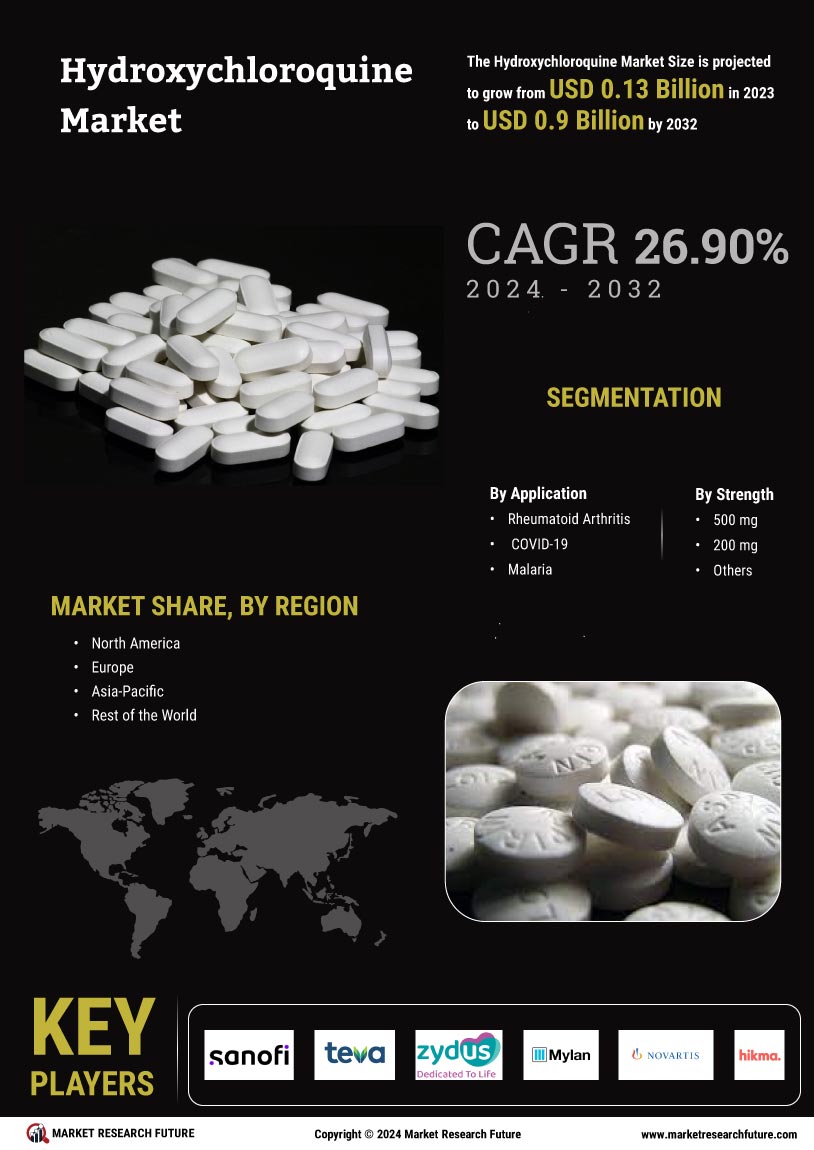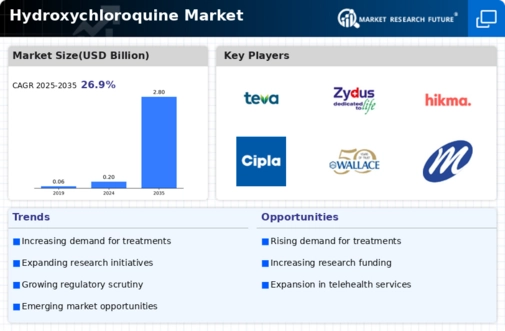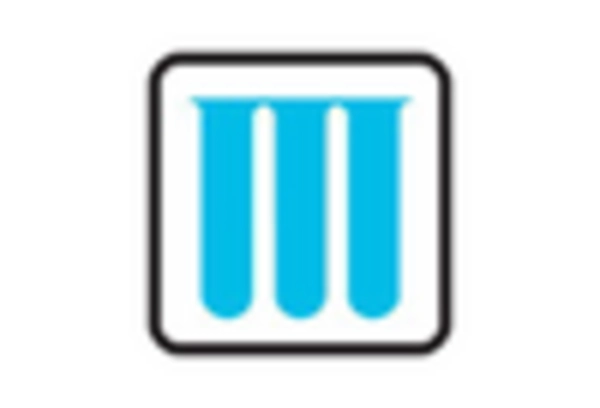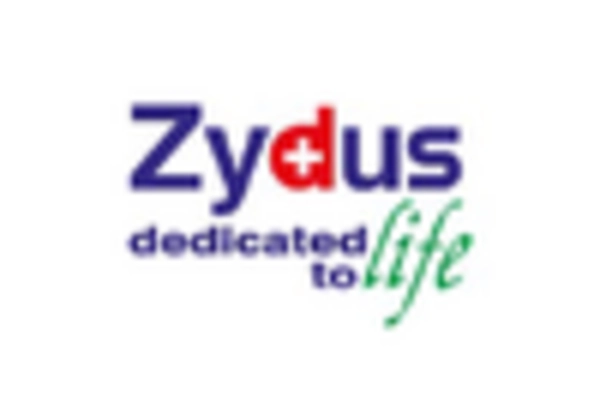Government Initiatives and Funding
Government initiatives and funding play a crucial role in shaping the Global Hydroxychloroquine Market Industry. Various governments are allocating resources to support the development and distribution of hydroxychloroquine, particularly in low-income countries where access to essential medications is limited. These initiatives often include subsidies, grants, and partnerships with pharmaceutical companies to ensure a steady supply of hydroxychloroquine. Such efforts not only enhance the drug's availability but also contribute to public health goals. As governments prioritize healthcare access, the market is expected to witness sustained growth, driven by these supportive policies.
Emerging Markets and Economic Growth
The Global Hydroxychloroquine Market Industry is poised for growth in emerging markets, where economic development is leading to increased healthcare spending. Countries in Asia and Africa are experiencing improvements in healthcare infrastructure, which facilitates better access to medications like hydroxychloroquine. As these regions invest in healthcare, the demand for effective treatments is likely to rise. This trend is supported by a growing middle class that prioritizes health and wellness. Consequently, the market may see a substantial increase in sales, reflecting the broader economic growth and the need for reliable healthcare solutions.
Rising Demand for Antimalarial Drugs
The Global Hydroxychloroquine Market Industry experiences a notable increase in demand for antimalarial drugs, particularly in regions where malaria remains endemic. Hydroxychloroquine Market is recognized for its efficacy in treating malaria, which contributes to its sustained relevance in public health. In 2024, the market is valued at approximately 0.2 USD Billion, reflecting the ongoing need for effective treatments. This demand is further driven by initiatives from global health organizations aimed at eradicating malaria, which may enhance the visibility and availability of hydroxychloroquine. As awareness of malaria prevention grows, the market is likely to expand significantly.
Growing Awareness of Autoimmune Disorders
The Global Hydroxychloroquine Market Industry is significantly influenced by the increasing awareness of autoimmune disorders. Conditions such as rheumatoid arthritis and lupus are gaining recognition, leading to a higher demand for effective treatments. Hydroxychloroquine Market is a cornerstone in managing these diseases, and as more patients seek diagnosis and treatment, the market is likely to expand. Educational campaigns and advocacy from patient organizations are instrumental in raising awareness, which may result in a larger patient population requiring hydroxychloroquine. This trend suggests a promising future for the market as it aligns with the growing focus on chronic disease management.
Increased Research and Development Activities
The Global Hydroxychloroquine Market Industry benefits from heightened research and development activities aimed at exploring new therapeutic applications of hydroxychloroquine. Researchers are investigating its potential use in various autoimmune diseases, which could broaden its market scope. The ongoing studies may lead to innovative formulations and delivery methods, enhancing patient compliance and treatment outcomes. As a result, the market is projected to grow at a compound annual growth rate of 27.13% from 2025 to 2035. This growth trajectory indicates a robust interest in hydroxychloroquine, potentially leading to a market valuation of 2.8 USD Billion by 2035.

















Leave a Comment